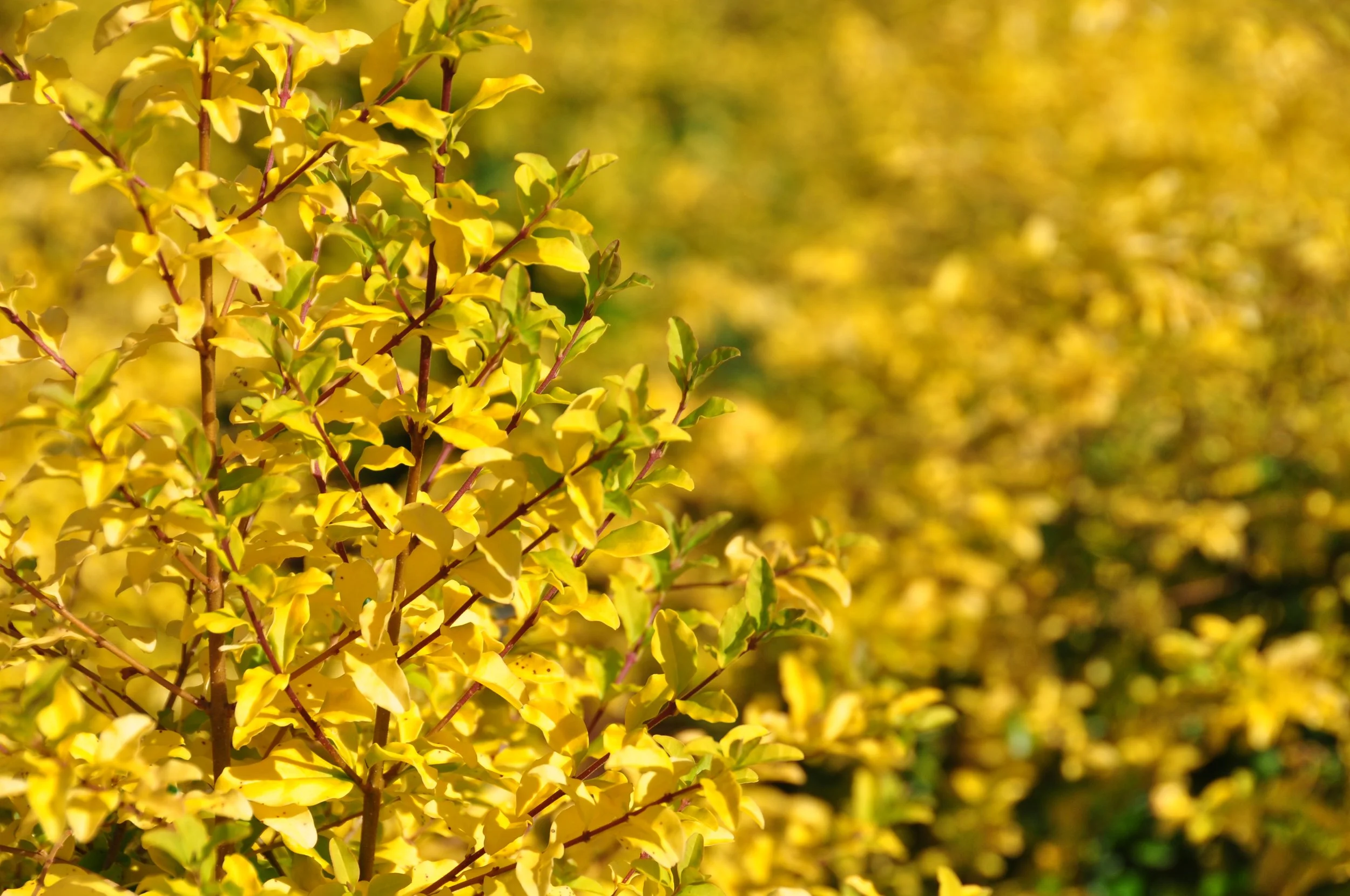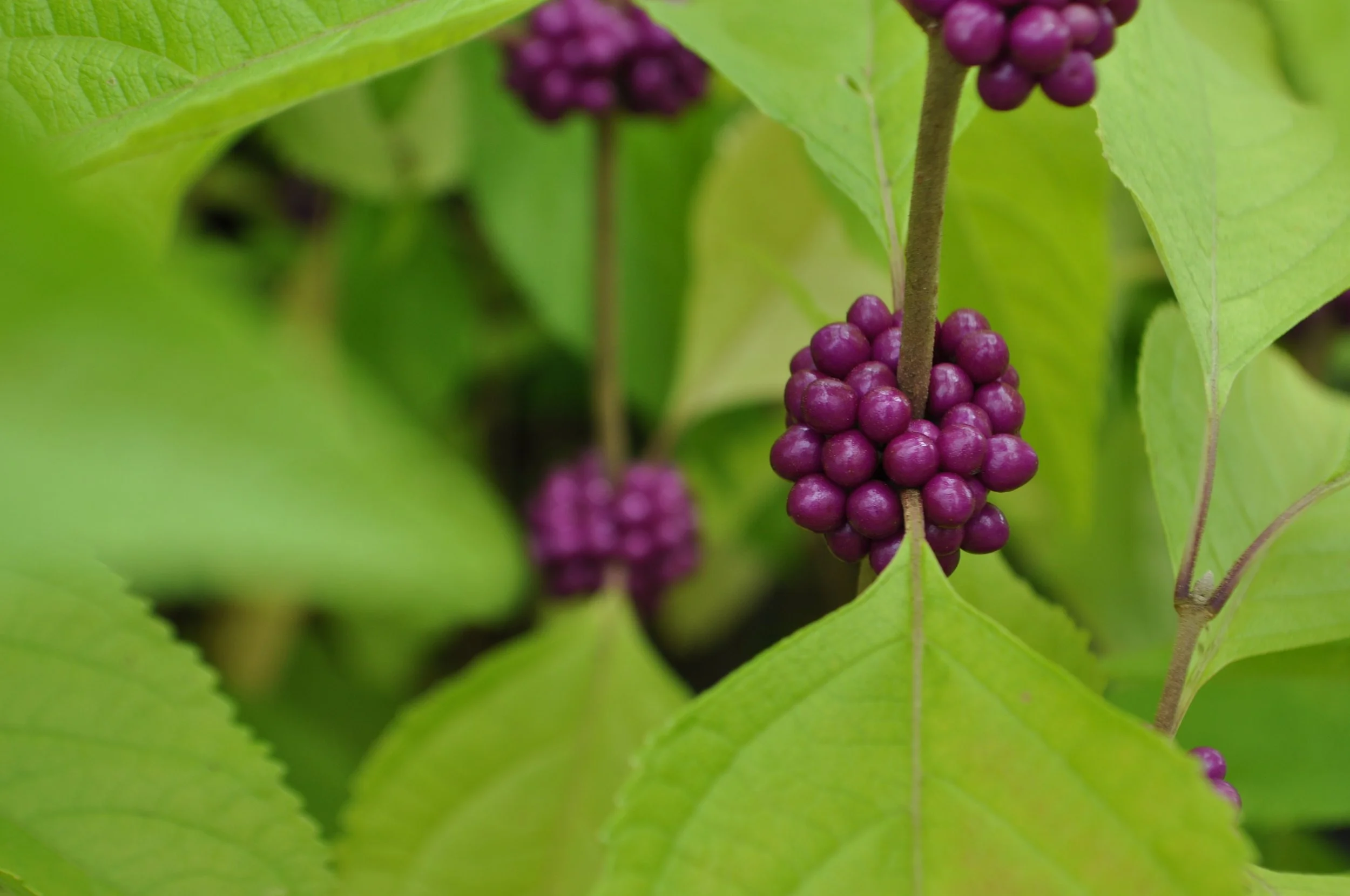Fall is for Color
Autumn Color Can Energize Our Gardens and Our Health
Fall is not the time to start bracing for the bare branches of the coming winter. Color can bloom now!
Many plants grow and bloom beautifully in the milder temperatures and can add diversity and texture to your garden and landscape. Look beyond the yellows, reds, and oranges of the falling leaves. There are plants out there with emerald branches, lime blooms, pink petals, and purple leaves that can fill your landscape with fall color that can last into the winter.
Why Color?
Research shows color improves mood. Apply this knowledge to your garden and landscape. Use colorful fall plants that will bring you calm or create a festive atmosphere. This will help keep you outside year-round.
And doing the work improves your physical health! Gardening and landscaping provide all three types of exercise: endurance, flexibility, and strength. All that pulling, digging, reaching, twisting, and bending of outside work helps strengthen your heart and lung health, burns calories, and improves your hand strength.
Use Smart Tools. Whether you prefer a monochromatic color scheme (ex. all white flowers) or want to plant every color in the rainbow, we encourage you to:
Follow directions. Read plant tags to be sure your outside space has the room, light, soil, and water your chosen plant needs to survive and thrive. If you have questions, ask your garden center professional.
Buy locally grown plants. Plants grown in your region are accustomed to area conditions and therefore more likely to do well in your garden or landscape. When you buy locally grown plants you are also supporting local businesses who have plant knowledge. Your local garden center professionals know where their plants are grown and the nurseries who grow them. They are best equipped to help you keep your outside alive.
JOCOPlants Fall Color Picks
Here are some JOCOPlants picks for fall color. All grow locally in North Carolina and can be found at—or ordered from—your local garden center.
Re-blooming Azaleas (Rhododendron) — Dozens of azaleas from the Encore® Autumn series re-bloom red, pink, purple, and white flowers throughout the spring, summer, and fall. The colored foliage of these shrubs also brightens gardens in the winter.
American Beautyberry (Callicarpa americana) — The American beautyberry is a woody, deciduous, perennial shrub that produces showy purple, white, or pink fruits in the fall.
Crepe Myrtle Varieties (Lagerstroemia) — Crepe myrtles are deciduous shrubs or small trees known for their long-lasting summer blooms. However, many varieties like ‘Tuskegee’ and ‘Sioux’ also have color-changing fall foliage and sloughing bark that give the trunks a marbled look in the winter.
Gardenia (Gardenia jasminoides) — Gardenias are woody, evergreen shrubs with fragrant, creamy white flowers, and lustrous, dark, emerald green foliage.
Panicle and Oak Leaf Hydrangeas (Hydrangea paniculata, Hydrangea quercifolia) — While hydrangeas bloom beautifully in the summer, these deciduous shrubs have leaves that can add additional fall flair to the garden. Panicle hydrangea blossoms appear from July until first frost and their large oval leaves turn yellow in the fall. Meanwhile oakleaf hydrangea leaves turn red or purple in the fall and can last well into winter.
Knock Out® Roses (Rosa hybrida 'Radrazz,' etc.) — The original Knock Out® Rose is a shrub rose that produces rich cherry red, hot pink blooms that bloom from spring until the first hard frost. Now there are 11 varieties available in shades of red, pink, white, and yellow.
Compact Southern Magnolias (Magnolia grandiflora) — Smaller versions of the southern magnolia like ‘Little Gem' and ‘Bracken's Brown Beauty’ have the evergreen, glossy-green-above-bronze-brown-below leaves and fragrant large white flowers of the original southern magnolias.
Japanese Spiraea Varieties (Spiraea japonica) — Japanese Spiraea is a flowering dwarf deciduous shrub with showy spring flowers and bright leaves that change color through the seasons. Flower and leaf colors depend on the cultivar. For example, Limemound® has pink flowers and it’s leaves change from lemon-yellow to bright lime. Meanwhile new growth on Double Play® Candy Corn® is candy apple red which turns orange, mature growth is pineapple yellow, and flowers bloom dark purple.


